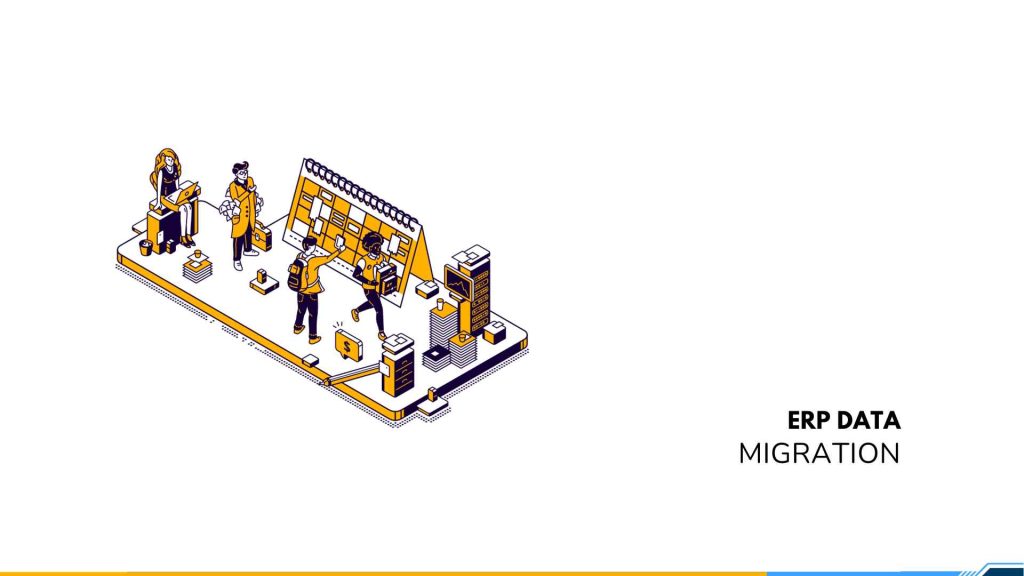In today’s dynamic business landscape, ERP systems have become the backbone of organizational operations. They streamline processes, enhance productivity, and provide a consolidated platform for managing diverse functions. However, as technology evolves, businesses often find the need to migrate their ERP systems to newer, more efficient solutions.
ERP migration, while promising immense benefits, is not devoid of challenges and risks. It demands a strategic approach, careful planning, and an understanding of the possible pitfalls that can lead to implementation failures. Let’s delve into the best practices for ERP migration, addressing challenges, strategies, and a comprehensive checklist to ensure a successful transition.
What is ERP Migration?
ERP migration transfers an existing ERP system or data to a new platform or upgraded version. It involves moving data, configurations, and processes from the legacy system to a new environment while ensuring minimal disruption to business operations. The goal is to enhance system capabilities, improve efficiency, and adapt to changing business needs.
ERP Migration Challenges and Risks
The journey of ERP migration is laden with challenges and risks. These include:
- Data Integrity: Ensuring the accuracy and integrity of data during the transfer process is critical. Migrating massive amounts of data without compromising its quality is a major challenge.
- Integration Complexity: Integrating the new system with existing applications and infrastructure can be intricate. Compatibility issues may arise, impacting the overall performance.
- Disruption to Operations: A major risk is the potential downtime or disruption to regular business operations during the migration process, affecting productivity and customer service.
- Security Concerns: Data security is a significant risk during migration. Transferring sensitive information opens vulnerabilities that can be exploited if not managed properly.
ERP Migration Strategy
A successful ERP migration strategy involves meticulous planning and execution. Key components of a successful system include:
- Comprehensive Assessment: Understanding the current system’s strengths, weaknesses, and requirements is crucial.
- Thorough Planning: Create a detailed migration plan, identifying key milestones, resources, and timelines.
- Testing and Validation: Rigorous testing and validation of data, processes, and functionalities in the new system are imperative to identify and rectify issues beforehand.
- Training and Change Management: Providing adequate training to users and implementing a change management plan to smooth the transition.
The Top ERP Implementation Failures of All Time
Several high-profile ERP implementation failures stand as cautionary tales for businesses. Notable cases include:
- Hershey’s: In 1999, Hershey’s suffered significant revenue losses due to an unsuccessful ERP implementation that led to order processing and shipping issues during the Halloween season.
- Lumber Liquidators: In 2019, Lumber Liquidators experienced disruptions in their supply chain and sales due to the problems related to their ERP system implementation.
The Main ERP Implementation Failure Reasons
The primary reasons for ERP implementation failures include:
- Poor Planning: Inadequate planning and underestimating the complexity of migration leads to failure.
- Lack of Change Management: Insufficient training and preparation for the organizational change often result in resistance and non-adoption of the new system.
- Data Issues: Inaccurate or incomplete data migration contributes to system malfunctions and inefficiencies.
ERP Data Migration Checklist
A comprehensive ERP data migration checklist involves the following:
- Data Assessment: Evaluate the quality and quantity of data to be migrated.
- Data Cleansing and Validation: Ensure data accuracy, clean out redundancies, and validate information for integrity.
- Backup and Recovery Plan: Implement a robust backup and recovery strategy to mitigate data loss or corruption.
- Testing: Thoroughly test data migration processes before the final migration to identify and address any issues.
How we can help
Implementing Acumatica cloud ERP for data migration greatly elevates a company’s ERP systems. By leveraging Acumatica’s robust cloud infrastructure, organizations experience enhanced data migration processes, ensuring seamless and efficient transfer of critical information. This technology not only streamlines the migration process but also enables improved data accuracy, accessibility, and security.
The comprehensive functionalities and adaptability of Acumatica contribute to a more agile and responsive ERP system, entrusting companies to make informed decisions and gain operational excellence. The migration to Acumatica cloud ERP ultimately fosters a more resilient, scalable, and integrated data ecosystem, propelling companies toward sustainable growth and competitive advantage in the dynamic business landscape.

Vijay comes with a vast experience in ERP and enterprise solutions space with about 20 years of experience in various packaged application like Acumatica, SAP, Orion, Salesforce.com, SugarCRM and, SalesLogix.

